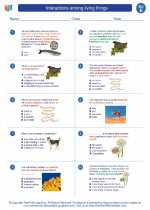Ice
Ice is the solid form of water that forms when water freezes at a temperature of 0 degrees Celsius (32 degrees Fahrenheit). It is found in glaciers, icebergs, and frozen bodies of water such as lakes and rivers. Ice is also commonly used for cooling drinks and preserving food.
Properties of Ice
- Physical State: Ice is a solid at temperatures below 0 degrees Celsius.
- Crystal Structure: Ice has a hexagonal crystal structure, which gives it its unique pattern of six-sided shapes.
- Density: Ice is less dense than liquid water, which is why it floats on water.
- Transparency: Ice is transparent, allowing light to pass through it.
Formation of Ice
Ice forms when water molecules slow down and come together to form a crystalline structure. This occurs when the temperature drops below the freezing point of water, causing the molecules to arrange themselves into a solid lattice.
Uses of Ice
Ice has many practical uses, including:
- Preserving and storing food
- Cooling drinks
- Creating artificial skating rinks
- Ice sculpting and carving
- Scientific research and experiments
Study Guide Questions
- What is the temperature at which water freezes to form ice?
- Describe the crystal structure of ice.
- Why does ice float on water?
- What are some practical uses of ice?
- Explain the process of ice formation.
These study guide questions will help you reinforce your understanding of the properties and uses of ice.
[Ice] Related Worksheets and Study Guides:
.◂Science Worksheets and Study Guides Fifth Grade. Interactions among living things
Study Guide Interactions among living things
Interactions among living things  Worksheet/Answer key
Worksheet/Answer key Interactions among living things
Interactions among living things  Worksheet/Answer key
Worksheet/Answer key Interactions among living things
Interactions among living things  Worksheet/Answer key
Worksheet/Answer key Interactions among living things
Interactions among living things  Vocabulary/Answer key
Vocabulary/Answer key Interactions among living things
Interactions among living things  Vocabulary/Answer key
Vocabulary/Answer key Interactions among living things
Interactions among living things  Vocabulary/Answer key
Vocabulary/Answer key Interactions among living things
Interactions among living things 

 Worksheet/Answer key
Worksheet/Answer key
 Worksheet/Answer key
Worksheet/Answer key
 Worksheet/Answer key
Worksheet/Answer key
 Vocabulary/Answer key
Vocabulary/Answer key
 Vocabulary/Answer key
Vocabulary/Answer key
 Vocabulary/Answer key
Vocabulary/Answer key

The resources above cover the following skills:
PHYSICAL SCIENCE (NGSS)
Energy
Students who demonstrate understanding can:
Use models to describe that energy in animals’ food (used for body repair, growth, motion, and to maintain body warmth) was once energy from the sun.
LIFE SCIENCE (NGSS)
From Molecules to Organisms: Structures and Processes
Students who demonstrate understanding can:
Support an argument that plants get the materials they need for growth chiefly from air and water.
Ecosystems: Interactions, Energy, and Dynamics
Students who demonstrate understanding can:
Develop a model to describe the movement of matter among plants, animals, decomposers, and the environment.